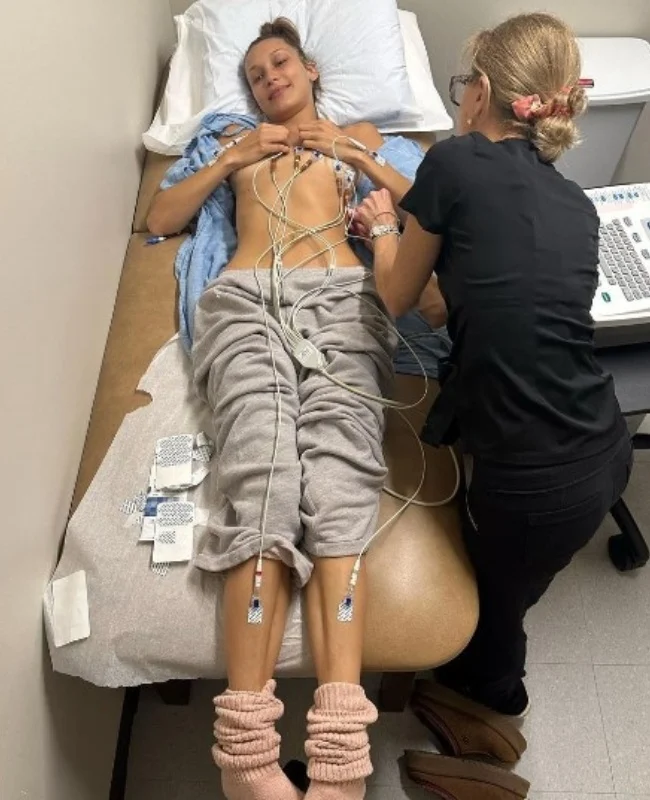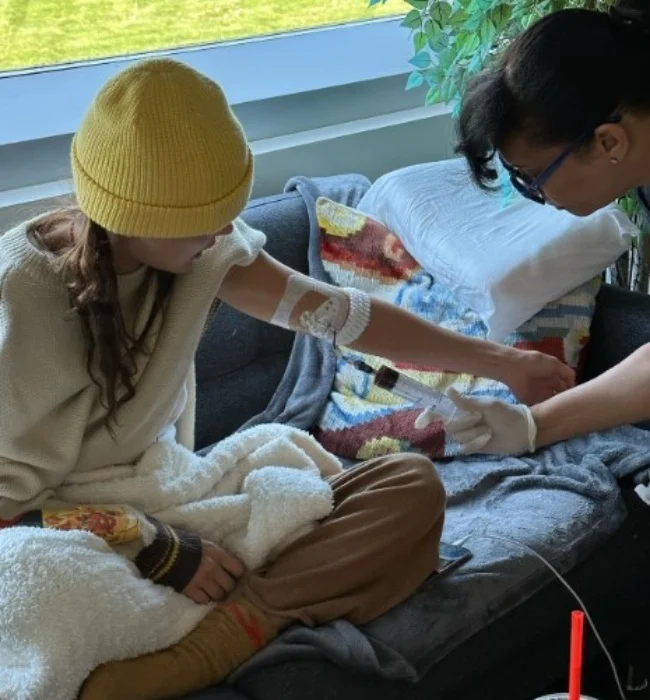Bella Hadid’s disclosure of her ‘invisible suffering’ attributed to a certain condition prompts a question: What exactly is Lyme disease?
CUPERTINO, CALIFORNIA | NOW THEN DIGITAL — Renowned international supermodel Bella Hadid has taken to social media to share her journey, revealing that she underwent over 100 days of treatment for a trio of health concerns: “Lyme, chronic disease, co-infection.”

This extensive treatment followed nearly 15 years of enduring what she termed “invisible suffering.”
“The little me that suffered would be so proud of grown me for not giving up on myself,” she said, before thanking her mom, former model and reality star Yolanda Hadid.
“Thankful to my mommy for keeping all of my medical records, sticking by me, never leaving my side, protecting, supporting, but most of all, believing me through all of this.”
Her posts featured images of medical procedures and past doctor’s reports, outlining issues such as depression, fatigue, and memory problems during her teenage years. Despite mentioning Lyme disease, she didn’t delve into specifics regarding her diagnosis or treatment.
‘Living in this state, worsening over time and work while trying to make myself, my family and the people who support me, proud, had taken a toll on me in ways I can’t really explain’ – Bella Hadid
“If I had to go through all of this again, to get here, to this exact moment I’m in right now, with all of you, finally healthy, I would do it all again. It made me who I am today.”
The following is what we currently understand about Lyme disease:
What exactly is Lyme disease?
Lyme disease, as explained by NSW Health, stems from a tick-borne infection caused by bacteria within the Borrelia burgdorferi sensu lato group.
It’s the distinct bacterial makeup within this group that categorizes it as Lyme disease, setting it apart from other infectious illnesses transmitted by ticks.
The disease spreads through tick bites that harbor the Borrelia bacteria, and it’s not transmissible between people.
The Federal Department of Health has highlighted its prevalence in regions across Asia, the US, and the UK.
Is Lyme disease found in Australia?
As per the Federal Department of Health, Lyme disease cannot be contracted within Australia’s borders. However, individuals infected abroad can receive diagnosis and treatment in the country.
Nonetheless, ticks in Australia can still lead to other ailments.
Conditions like Q fever, allergic reactions, paralysis, and mammalian meat allergy are all transmitted by ticks in Australia.
Certain patients and medical professionals employ the term “Lyme-like illness” to characterize a cluster of symptoms akin to Lyme disease but contracted domestically.
NSW Health emphasizes that the scope of this “Lyme-like illness” hasn’t been precisely defined.
Groups like the Lyme Disease Association of Australia contest the notion that the disease cannot be contracted locally, advocating for further research.
Given that Hadid attributes her “invisible suffering” to this condition, what are its effects?

What are the symptoms?
Those afflicted by Lyme disease may experience:
– A rash that starts as a small red spot, eventually resembling a bullseye pattern
– Fever
– Headaches
– Fatigue
– Joint pain
It’s worth noting that not everyone afflicted with Lyme disease will experience all these symptoms. They can manifest up to a month after infection.
If untreated, the disease can spread through the bloodstream, causing infections around the heart and brain. It can also result in lasting neurological symptoms.
How is it diagnosed?
Doctors consider a patient’s symptoms and likelihood of exposure to infected ticks when diagnosing Lyme disease. Laboratory testing can also be utilized for diagnosis, though it’s intricate.
NSW Health cautions that test outcomes are seldom definitive, with some results being both false positives and false negatives.
They also advise against testing in non-accredited labs, regardless of whether they’re within Australia or abroad.
As per the Centers for Disease Control and Prevention (CDC), a two-step testing protocol is recommended. It initiates with an ELISA test, followed by a Western blot test if the ELISA outcome is positive or inconclusive. Both assessments can be conducted utilizing the same blood sample.
Alternatively, at-home test kits for Lyme disease are accessible. These kits typically involve procuring a blood droplet from one’s fingertip and forwarding it to a laboratory for analysis. However, it’s crucial to consult a healthcare provider before embarking on an at-home test.
This step is essential since certain at-home tests might utilize unproven lab methodologies, thereby potentially yielding unreliable results.
Significantly, the tests intended to detect Lyme disease are not infallible. Hence, a healthcare provider might opt to commence antibiotic treatment even if test outcomes are negative, provided that the symptoms strongly suggest Lyme disease.
In cases where a Lyme disease infection is suspected, prompt medical attention is of utmost importance.
What’s the treatment?
Typically, Lyme disease is managed with a regimen of antibiotics, often doxycycline.
This antibiotic is commonly employed to treat respiratory infections like pneumonia. Additionally, it serves as a preventive measure for malaria.
Various other well-known individuals have grappled with diagnoses of Lyme disease. This list encompasses singer Avril Lavigne, who characterized it as “the worst time in my life”; reality TV personality Kelly Osbourne; comedian Amy Schumer; pop sensation Justin Bieber; and country music luminary Shania Twain, who asserted that her career felt the impact.
Reflecting on her experience, Twain underscored the perilous nature of Lyme disease: “Lyme is very dangerous because you have a very short window to catch it and then treat it and then even when you treat it, you could still very well be left with effects, which is what happened to me,” she shared in a 2017 interview with CBC.
Editor’s Note: Please contact press@nowthendigital.com if you find any of the content to be inaccurate or outdated.

















